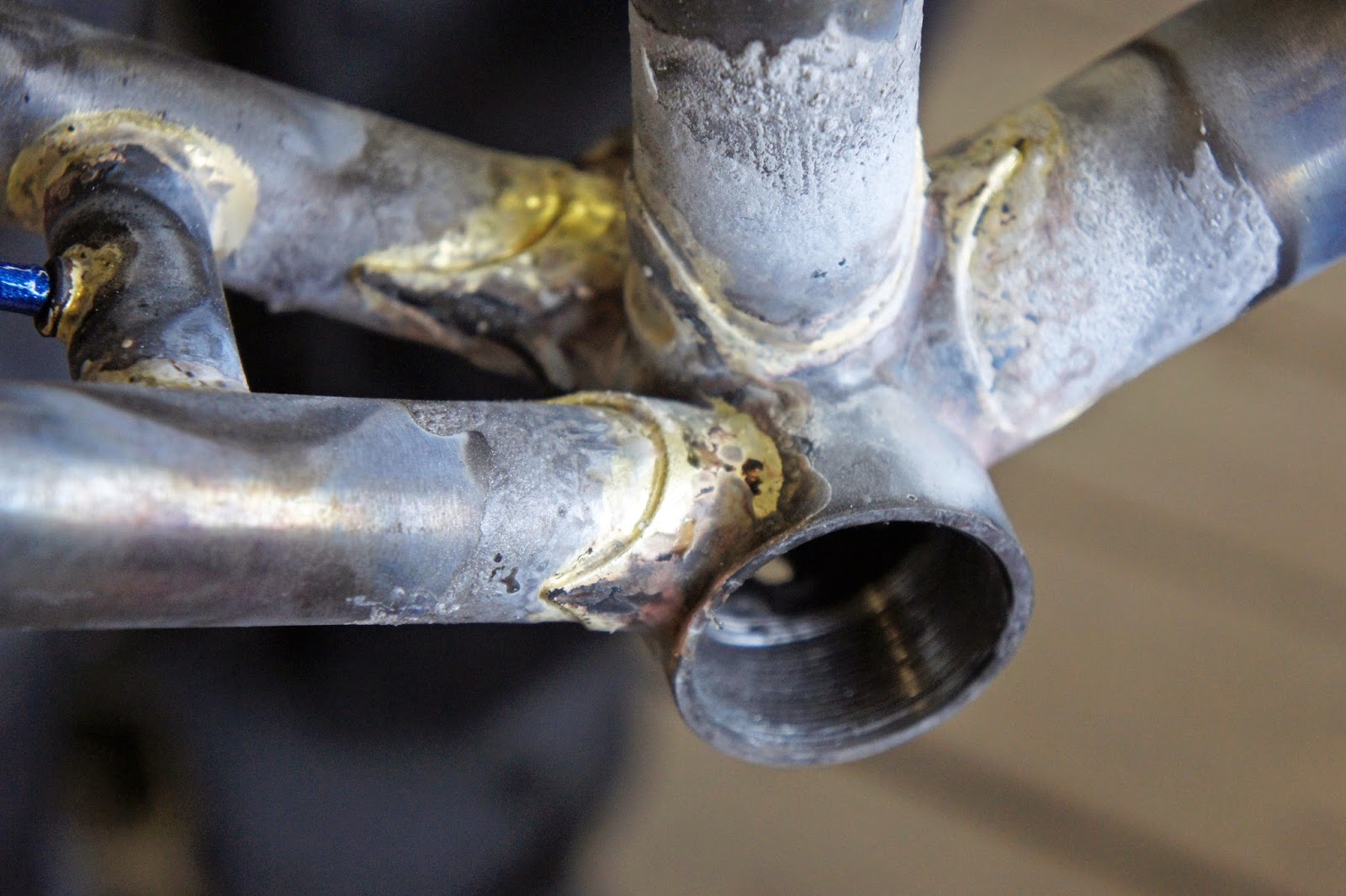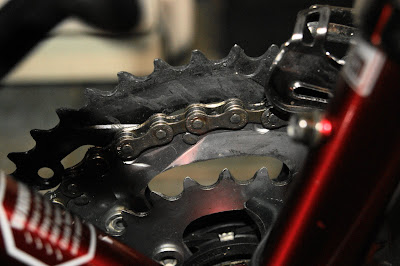Been a few weeks since my last
entry. A welcome tsunami of products has kept me out along the lanes, late at
night and mischief moderated. 500 miles in, I reached some very tangible
conclusions about Vee Tire Co Zilent MK2. https://www.sevendaycyclist.com/vee-tire-co-zilent-mark-2-tyres
Our 38mm sections have proven
themselves swift, comfortable and extremely durable rubber, for everyday
riding. Project Dawes has also gathered a little more momentum https://www.sevendaycyclist.com/gravel-on-a-budget-part-two-compone
and the Weldtite TF2 Advanced Ceramic
chain wax has also performed, pretty much as I was expecting, right down to the
miles per application. https://www.sevendaycyclist.com/tf2-1 For the time being, I’ll stick with its clean
and slick characteristics, while conditions remain distinctly fair-weather.
Will be interesting to see how
it fares, during the darker months. On balance, I prefer a cleaner lubricant
that requires more frequent reapplication, over something sticky and sludgy.
However, chances are, by this point, I’ll have switched to something more
stoical.
With trees shedding leaves,
the nights are closing in. Dusk chimes around 18.45 and its nigh on pitch black
by 19.15. https://stenningphotographic.blogspot.com/2018/10/on-waterfrontwith-aurora-ray.html
My MK1 KA’s creaking Constant Velocity
joint and dental appointment meant I wasn’t attending the Cycle Show, at
Birmingham NEC’s. However, Steve (co-editor) was and suppliers are increasingly
keen to work with us.
This week I received these
lights from Oxford Products.
We have their UGOE Classical
1000 lumen mini, which is a four-mode light, producing maximum output of
1000lumens. Pretty much my “on paper” benchmark, for speedwork along unlit
lanes.
There’s a lot to be said for the latest generation of high- power
slimline torch types. Blackburn’s Dayblazer family (1100, 800 and 400 lumens
respectively) being prime examples.
No cabling, or external battery
clinging to the top tube… Output to run time ratios are relatively favourable. So
long as you are using the most powerful settings sparingly.
Longer distances, along pitch
black roads, (where navigational prowess is king) calls for a
bigger/replacement battery. Now, better quality systems have become much smaller.
This Xeccon 1300 being a case in point, although the neoprene encased battery
is still pretty brick like https://www.sevendaycyclist.com/xeccon-1300-wireless-front-light
.
The average auction site
“Master Blaster” is relatively large, in every respect, consuming a fair chunk
of handlebar real-estate. Yes, they may pump out 1500 lumens-more in some cases.
However, low-rent lens and reflector mean output quality is a little sketchy.
Most notably when haring along swooping descents. A decent spot beam makes potential
hazards so much easier to spot, and ultimately, swerve.
Looking through the online
catalogue, I wasn’t expecting the Ugoe to be this diminutive. As the photos
illustrate, its CNC machined aircraft grade aluminium lamp and switch are
literally thimble sized. Ample room for computers, GPS, action cameras/similar
creature comforts.
Tidy freaks will want to route
the cabling more discretely along the top tube. There’s plenty of it too. Ample
for helmet mounting (courtesy of the supplied Go-Pro design).
Even the 3.7volt 5200mAH
lithium ion battery is slimline and fits very unobtrusively, in a jacket, or
jersey pocket. There are four modes, 1000lumens is reckoned good for 2hrs 30
minutes, 500 lumens 5 hours and 10 hours claimed for low and flashing,
respectively.
Looking forward to seeing how
it compares, output wise, with compact torches, such as this Blackburn
Dayblazer 1100.
At the other end of the
lighting spectrum we have their Ultra Torch R50 and Ultra Torch F100. 50 and
100 lumens apiece, both are at the more potent end of the blinkie market.
Arguably you only need two, but eight modes, 270-degree projection and run
times between 2 and 45 hours are very appealing. Some obvious nods in the
direction of Cat Eye Rapid X.
Physical profiles aside both
use COB (Chips on board) technology (where diodes are mounted directly on the
circuit board). this ensures more can be shoe-horned into the same space, generating
greater intensity.
The Ultratorch are fuelled by
a 3.7volt 500mAh Lithium Polymer cell. A rubberised “foot” hides the micro USB
port, keeping rain and other wet ingress outside. This also ensures the light
sits flush, against seat posts and indeed, seat stays
Good optics and intelligent
deployment are more useable than lumens alone. For example, by my reckoning 15
lumens is about right for town duties. Strikes the right balance between
asserting presence, without tickling retinas at close quarters, or consuming
reserves overly quickly.
30 is still OK but better
along the open road. On pitch black roads, misty mornings, or as a daylight
mode, 50 is good. Distinctive strobing patterns also play a very significant
part too. £17.99 apiece, they seem seriously good value, but lets’ see what the
next few weeks reveal.


















 Such
Such  Well-dressed riders and machines form the basis of winter survival and it's been the first week that 3/4 length knickers have been shunned in favour of tights. Hands and feet are the first extremities to suffer in the cold so with this in mind, its timely we take a quick peek at these weatherproof gloves from
Well-dressed riders and machines form the basis of winter survival and it's been the first week that 3/4 length knickers have been shunned in favour of tights. Hands and feet are the first extremities to suffer in the cold so with this in mind, its timely we take a quick peek at these weatherproof gloves from 




 Low isn't radically better in terms of economy but more than adequate for sub/urban runs while flashing saves the day when battery life and visibility to other traffic preside over outright visual clarity. Run times are around three hours in top, four in low and six in flashing. Fully charging the lithium battery will cost a couple of hours at the mains while the helmet mount option and very modest weight opens horizons to nocturnal
Low isn't radically better in terms of economy but more than adequate for sub/urban runs while flashing saves the day when battery life and visibility to other traffic preside over outright visual clarity. Run times are around three hours in top, four in low and six in flashing. Fully charging the lithium battery will cost a couple of hours at the mains while the helmet mount option and very modest weight opens horizons to nocturnal